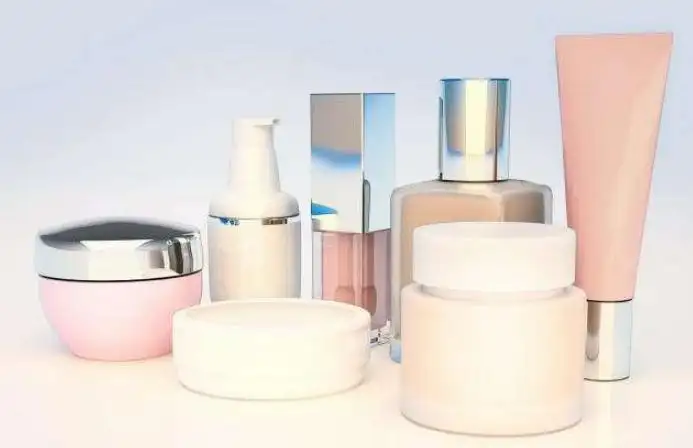
Cosmetic ingredients list of identification laws
1. The names of the ingredients identified are ordered in descending order of their content in the formulation, i.e. the higher the ranking, the higher the content of this ingredient in the cosmetic. For example, water is the most commonly used solvent in most cosmetics, and in many cases is the most abundant ingredient, so it is generally at the top of the ingredient list.
2. For the ingredients that contain less than or equal to 1% in the product, after the ingredients that are added in an amount greater than 1%, they can be arranged in any order, that is to say, such ingredients can be arranged in no particular order among themselves.
3. Although the flavor is a mixture of a variety of fragrances, but only as an ingredient in the formula, marked with the word “flavor”, and together with other ingredients in the order of addition to the ingredients list.
4. Pigments are generally marked with the colorant number (i.e. index number), such as “CI73015”, if there is no number, you can use the Chinese name of the colorant, such as “pigment yellow”.
The order in which the ingredients are ranked does not represent their importance. For example, water and some other substances such as glycerin and butylene glycol are commonly used as solvents, which, in addition to their basic moisturizing role, help to disperse and dissolve the active ingredients in cosmetics and help these active ingredients to reach our skin or hair in order to work.
Many of the active ingredients may not be as high as water and may be listed after water in the ingredient list, but they are important factors in the effectiveness of cosmetics.
Matrix-based ingredients
This category of ingredients is used in larger amounts and is usually the one at the top of the full ingredient list. Because they are the medium for the active ingredients of the cosmetic, they are present in larger amounts and are usually at the top of the ingredient list, such as water, ethanol, mineral oil, petroleum jelly, etc.
Skin Care Ingredients
There are many ingredients in cosmetics that have a beneficial effect on the skin, with a variety of chemical properties that work through their own different principles to care for our skin, helping it to become more hydrated, firm, smooth, brighter, etc.
For example, glycerin, hyaluronic acid, collagen hydrolysate, etc. which have moisturizing effect, ceramide, vitamin E, etc. which can repair the stratum corneum, salicylic acid, keratolytic enzyme, etc. which can help exfoliate, superoxide dismutase (SOD), vitamin C derivatives, etc. which can antioxidant, jojoba oil and shea butter which can moisturize the skin, etc.
Hair Care Ingredients
This includes ingredients to help soften hair, such as dimethicone (silicone oil), quaternary ammonium salts, vitamin E, etc.; and ingredients to help remove dandruff, such as zinc pyrithione and salicylic acid.
pH-regulating ingredients
Our skin and hair are in a weak acidic state under normal conditions. The pH of skin is about 4.5 to 6.5 (7 is neutral, less than 7 is acidic, more than 7 is alkaline) and the pH of hair is neutral to weakly acidic. In order to maintain the normal pH of the skin and hair, cosmetics need to maintain a certain pH level, but this does not mean that cosmetics must be within the pH range of the skin to work.
Some alkaline products can better cleanse and some acidic products can better help the skin renew itself. The principle is that cosmetics should not overly disrupt the skin’s own acid-base balance. Commonly used acid-base regulators include citric acid, phosphoric acid, tartaric acid, sodium dihydrogen phosphate, triethanolamine, etc.
Preservatives
Commonly used are methyl hydroxybenzene, butyl hydroxybenzene, ethyl hydroxybenzene, isobutyl hydroxybenzene, propyl hydroxybenzene, potassium sorbate, sodium benzoate, triclosan, benzalkonium chloride, methylchloroisothiazolinone, methylisothiazolinone, phenoxyethanol, chlorophenol glycerol ether, sodium dehydroacetate, etc.
Colorants
Colorants in cosmetics are not marked with a specific name, usually identified by number, such as CI77491, etc. If the colorant does not have an index number, then its Chinese name can be used.
Cleaner
Cleansing is a major category of cosmetic effects. It is mainly surfactants that play a role. Such as cocamidopropyl betaine, sodium lauryl sulfate and sodium laureth sulfate commonly used in shampoo products and body washes.
Sodium lauroyl glutamate, sodium lauroyl sarcosinate and sodium lauroyl collagen amino acids are commonly used in amino acid cleansers; natural oils (fatty acids) and sodium hydroxide and potassium hydroxide are commonly used in cleansing creams (fatty acids react with sodium hydroxide and potassium hydroxide during preparation to produce soap as a cleansing agent), etc.
*Disclaimer: The content contained in this article comes from the Internet, WeChat public numbers and other public channels, and we maintain a neutral attitude toward the views expressed in the article. This article is for reference and exchange only. The copyright of the reproduced manuscript belongs to the original author and the institution, and if there is any infringementPlease contact Jetson Chemical for deletion
